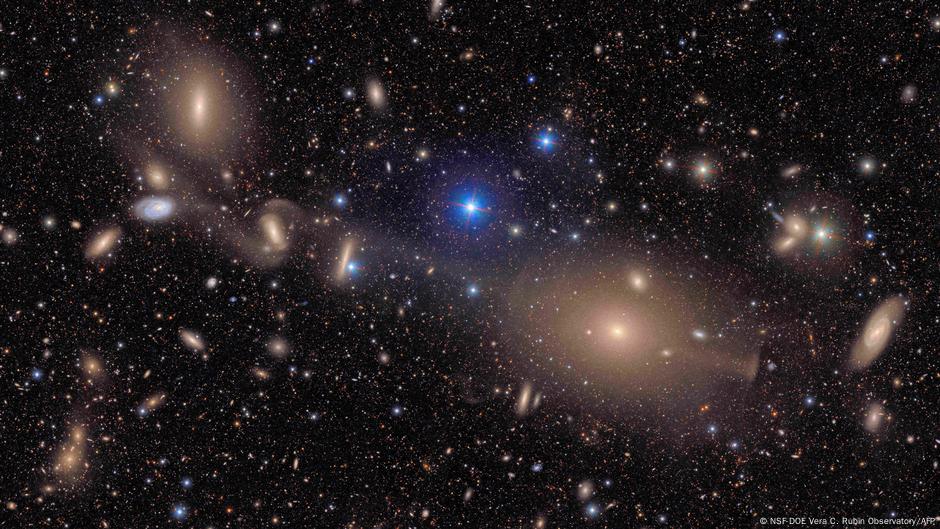
Stunning first images released by Vera Rubin Observatory
How did your country report this? Share your view in the comments.
Diverging Reports Breakdown
Stunning first images released by Vera Rubin Observatory – DW – 06
Vera Rubin Observatory in Chile has released first images of scenes within our Milky Way as well as of remote galaxies. The US-funded observatory is equipped with the world’s largest digital camera and an 8.4 meter (27.5 foot) telescope. It is being hailed for its capacity for tracking asteroids and for spotting interstellar objects passing through the solar system. The observatory will begin its flagship project — the Legacy Survey of Space and Time (LSST) — later this year. In the course of this, it will carry out highly precise scans of the night sky every day for a decade.
The Vera Rubin Observatory in Chile has released first images of scenes within our Milky Way as well as of remote galaxies, showing distant objects with unprecedented clarity.
The US-funded observatory, located on the summit of Cerro Pachon in central Chile, where the night sky is particularly clear and pollution-free, is equipped with the world’s largest digital camera and an 8.4 meter (27.5 foot) telescope.
Images of unprecedented clarity
According to the observatory’s website , the telescope and camera “will take detailed images of the southern hemisphere sky for 10 years, covering the entire sky every few nights and creating an ultra-wide, ultra-high-definition, time-lapse record — the largest astronomical movie of all time.”
Among the first images released was a composite photo of the Trifid Nebula and the Lagoon Nebula taken over seven hours. Both nebulae, which are birthplaces of stars, are within our Milky Way galaxy but several thousand light-years away, and the image shows details never before seen.
The Trifid Nebula (top right) and the Lagoon Nebula in a composite photo of 678 spearate images Image: NSF-DOE Vera C. Rubin Observatory/AFP
Another image showed the Virgo Cluster, which comprises up to 2,000 galaxies.
The Virgo Cluster, showing several spiral galaxies Image: NSF-DOE Vera C. Rubin Observatory/AFP
A decade scanning the night sky
The observatory, which was two decades in the making, will begin its flagship project — the Legacy Survey of Space and Time (LSST) — later this year. In the course of this, it will carry out highly precise scans of the night sky every day for a decade.
Among other things, the observatory is being hailed for its capacity for tracking asteroids and for spotting interstellar objects passing through the solar system.
The observatory, a joint initiative of the US National Science Foundation and Department of Energy, is named after pioneering American astronomer Vera C. Rubin (1928-2016).
Rubin’s research on galaxy rotation rates provided the first persuasive evidence for the existence of so-called dark matter, which some think could be a factor holding galaxies together despite their rapidly spinning motion, which would otherwise cause them to disintegrate.
Why is our home galaxy called the Milky Way? To view this video please enable JavaScript, and consider upgrading to a web browser that supports HTML5 video
Edited by: Kieran Burke
Source: https://www.dw.com/en/stunning-first-images-released-by-vera-rubin-observatory/a-73002309
